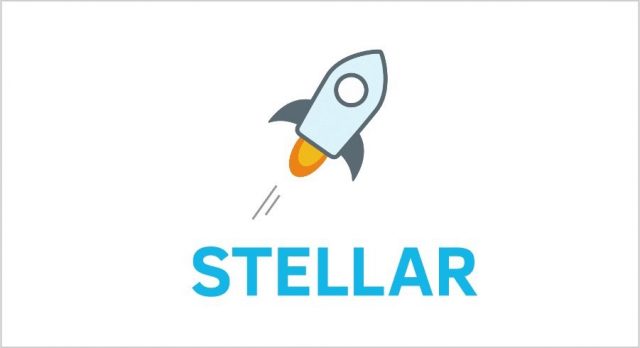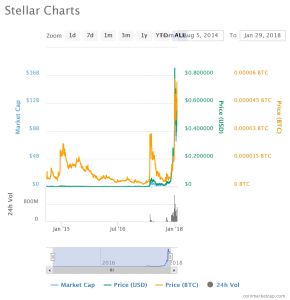
The Bright Outlook of Stellar Lumens (XLM)

Stellar (XLM) – Despite the recent downturn, the cryptocurrency markets remain full of potential for investors. One promising opportunity is Stellar, a relatively new cryptocurrency that is already making big splashes in the news. Stellar is an open-source protocol and distributed payments system, which aims to facilitate fast cross-currency and asset transactions for low cost using its native crypto asset the lumen (XLM) as a bridge. Stellar’s goal is to make sending money as easy and cheap as sending email.
Stellar was created in 2014 by Jed McCaleb and Joyce Kim. It has since been supported by the nonprofit Stellar Development Foundation. Originally based on the Ripple protocol, Stellar has use cases including remittances, micropayments and microsavings, mobile banking, and services for the unbanked. Here is how it works: Stellar’s servers communicate and sync together to maintain a decentralized ledger that records people’s account balances. Anchors act as the bridge between different currencies and the Stellar network. Money transactions in currencies besides lumens are in the form of credit issued by anchors. Credit can be sent and received between people on Stellar’s network. The Stellar network can store people’s offers to buy and sell currencies in an orderbook to make it easy to convert different currencies. For example, if one wants to send a friend US dollars using a euro account balance, then the network automatically finds the best exchange rate. The transaction can be completed through an existing offer on the orderbook, using lumens as an intermediary currency, or a chain of conversions between many currencies.

Image 1 – Jed McCaleb founder of Ripple (XRP) Stellar (XLM) & Mt. Gox – Source: http://youtube.com
Unlike other cryptocurrencies, Stellar’s consensus mechanism is not proof-of-work mining, but rather the Stellar Consensus Protocol, an interesting application of the federated Byzantine agreement. In computer science, that is a system of rules that helps protect against arbitrary failure in distributed algorithms. Basically, the Stellar Consensus Protocol is a new system of rules with the potential for decentralized control, flexible trust, low latency, and asymptotic security. It is considered secure and gentle on computing resources. Finally, Stellar boasts that its network can process 1,000 transactions per second, a fast rate for crypto.
Interested investors can easily buy and sell lumens. US citizens can easily use USD to buy Bitcoin (BTC) or Ether (ETH) on the Coinbase/GDAX or Kraken exchanges and then transfer the BTC or ETH to the Binance or Bittrex exchanges. Finally, they can use BTC or ETH to buy XLM on Binance or Bittrex. European citizens can do the same using EUR and GBP. Long-term investors are advised to move their XLM offsite to a recommended private wallet for safety.

Image 2 – Stellar (XLM) Charts – Source: http://coinmarketcap.com
Stellar has exciting technology, but the intelligent investor acknowledges potential risks. First is the risk that financial institutions will create their own closed-source versions of lumens or use a centralized alternative like Ripple Lab’s XRP. Also, the Stellar network contains few nodes compared to Bitcoin or Ethereum, due to a lack of mining incentive to run nodes. The low number of nodes could lead to security concerns in the future. Finally, the Stellar Development Foundation, unlike some other crypto foundations, is US-based and subject to US law, under the jurisdiction of a Congress that may be less crypto-friendly in the future.
Reasons to invest in lumens include the potentially revolutionary technology and clear supply and demand parameters. Stellar is working to solve real-world problems and make life better for people. Because the supply of lumens is regulated to increase 1% per year, greater demand as adoption grows should mean upward pressure on price. And some startups are launching ICOs on the Stellar network, a bullish sign. Finally, Stellar can be part of any crypto investor’s diversified portfolio.
The author does not hold any positions in XLM.